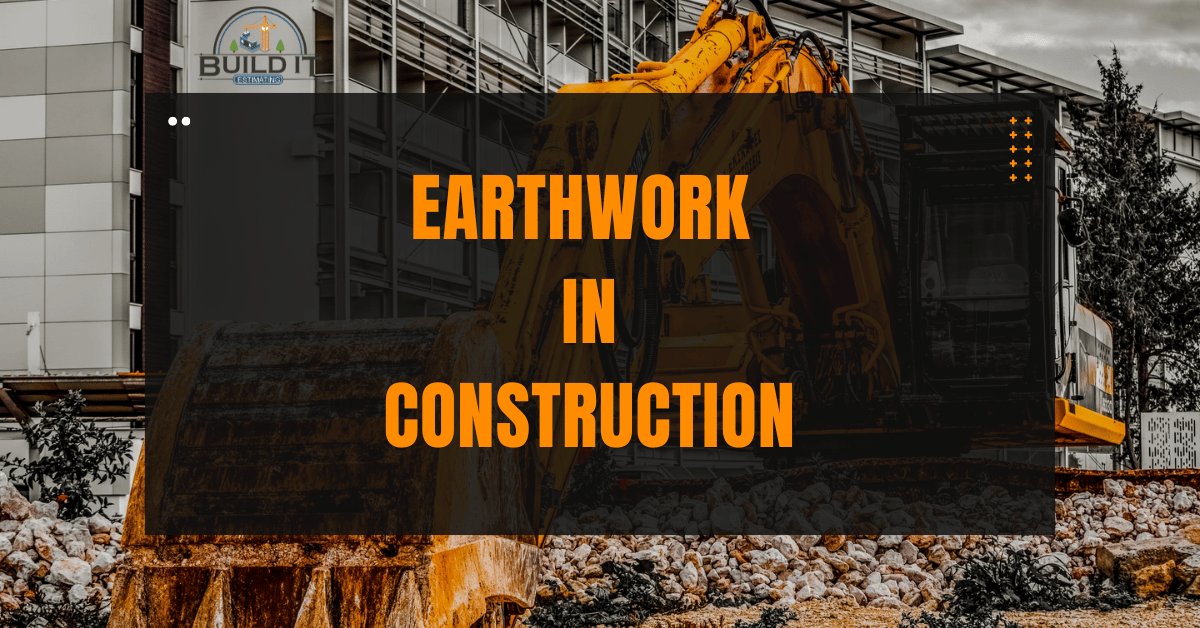The foundation of any construction project lies in its earthwork. This critical phase involves the manipulation of soil and rock to create a stable base for structures. Earthwork encompasses a variety of activities such as excavation, grading, and trenching, each playing a vital role in the successful completion of construction projects. This guide delves into the different aspects of earthwork, highlighting its importance, processes, and the technology driving its evolution.
Earthwork in Construction
Earthwork in construction refers to the process of moving and processing portions of the earth’s surface to create suitable conditions for construction. It involves the removal, moving, and addition of soil or rock to achieve desired ground levels for the foundation of buildings, roads, and other infrastructure projects. This process is fundamental as it sets the groundwork for the entire structure, ensuring stability and longevity.
Historical Perspective of Earthwork
Historically, earthwork has been a fundamental part of construction, dating back to ancient civilizations. The construction of the pyramids in Egypt and the Great Wall of China are prime examples of early earthwork, showcasing the importance of this process in building monumental structures. Over time, the techniques and tools used in earthwork have evolved, from manual labor and simple tools to sophisticated machinery and technology, enhancing efficiency and precision.
Types of Earthwork in Construction
Excavation
Excavation is the process of removing soil or rock from a site to create space for foundations, basements, and other underground structures. It is one of the most common types of earthwork and involves careful planning and execution to ensure the stability of the surrounding ground.
Grading
Grading involves leveling the ground to create a flat and even surface for construction. This process is essential for ensuring proper drainage and preventing water accumulation, which can compromise the integrity of the structure.
Trenching
Trenching is the creation of narrow, elongated excavations for the installation of utilities such as water, gas, and electrical lines. This type of earthwork requires precision and adherence to safety standards to avoid accidents and ensure the proper installation of utilities.
Land Clearing
Land clearing involves the removal of vegetation, trees, and other obstacles from a construction site. This process is crucial for preparing the land for excavation and other earthwork activities.
Processes Involved in Earthwork
Site Surveying
Site surveying is the initial step in any earthwork project. It involves measuring and mapping the construction site to determine the exact dimensions and topography.
Excavation Techniques
Various excavation techniques are used depending on the nature of the project and the type of soil. Common techniques include open excavation, trench excavation, and cut-and-fill excavation. Each technique requires specific equipment and expertise to ensure safety and efficiency.
Soil Stabilization
Soil stabilization is the process of improving the properties of soil to enhance its strength and durability. This can be achieved through mechanical methods such as compaction or chemical methods such as the addition of stabilizing agents.
Compaction Methods
Compaction is a crucial process in earthwork that involves compressing the soil to increase its density and stability. This is typically done using machinery such as rollers and compactors, ensuring a solid foundation for construction.
Machinery and Equipment Used
Excavators
Excavators are versatile machines used for digging, lifting, and moving soil and rock. They come in various sizes and are equipped with different attachments to handle a range of earthwork tasks.
Bulldozers
Bulldozers are powerful machines used for pushing large quantities of soil, rock, and debris. They are essential for tasks such as land clearing, grading, and creating access roads on construction sites.
Graders
These are used for fine grading and leveling of the soil surface. They are equipped with a long blade that can be adjusted to achieve the desired level of smoothness and slope.
Compactors
They are essential for ensuring a solid foundation and preventing settlement and shifting of the soil.
Materials Used in Earthwork
Types of Soil
Understanding the different types of soil is crucial in earthwork. Common soil types include clay, silt, sand, and gravel, each with distinct properties that affect their suitability for construction.
Gravel and Sand
They provide excellent drainage and stability, making them ideal for foundations and sub-base layers in roads and pavements.
Challenges in Earthwork
Weather Conditions
Weather conditions can significantly impact earthwork activities. Rain, snow, and extreme temperatures can affect the stability of the soil and the efficiency of machinery, leading to delays and increased costs.
Soil Variability
Soil variability poses a challenge in earthwork as different types of soil require different handling techniques. Unexpected changes in soil composition can complicate the excavation and stabilization processes.
Safety Measures in Earthwork
Personal Protective Equipment (PPE)
Ensuring the safety of workers is paramount in earthwork. The use of personal protective equipment (PPE) such as helmets, gloves, and safety boots is mandatory to protect workers from potential hazards.
Safety Training
Proper training ensures that workers are aware of the risks and know how to operate machinery safely and effectively.
Regulatory Compliance
Compliance with regulatory standards is crucial in earthwork to ensure the safety of workers and the environment. Adhering to these standards helps prevent accidents and legal issues.
Environmental Considerations
Erosion Control
Erosion control is a critical aspect of earthwork to prevent soil erosion and sediment runoff. Techniques such as silt fences, erosion control blankets, and vegetation planting are used to stabilize the soil and protect water quality.
Dust Management
Dust management is essential to minimize air pollution and health risks. Water spraying, dust suppressants, and proper site management practices help control dust levels during earthwork activities.
Cost Factors in Earthwork
Material Costs
Material costs are a significant factor in earthwork projects. The type and quantity of soil, gravel, sand, and stabilizing agents required can greatly impact the overall cost.
Labor Costs
Labor costs include wages for workers involved in excavation, grading, and other earthwork activities.
Equipment Costs
The cost of machinery and equipment used in earthwork can be substantial. Excavators, bulldozers, graders, and compactors require significant investment, and maintenance and operational costs add to the total expenditure.
Technological Advances in Earthwork
GPS and Drones
The use of GPS and drones has revolutionized earthwork by improving accuracy and efficiency. GPS technology enables precise site surveying and machine control, while drones provide aerial views for better project management.
3D Modeling
3D modeling is an advanced technique used to create detailed digital representations of the construction site. It helps in planning and visualizing earthwork activities, ensuring better coordination and execution.
Best Practices in Earthwork Management
Project Planning
Effective project planning is essential for successful earthwork. It involves detailed scheduling, resource allocation, and risk management to ensure timely and cost-effective completion.
Quality Control
Quality control measures are crucial to ensure the integrity of earthwork. Regular inspections, soil testing, and adherence to standards help maintain the quality of the work and prevent issues down the line.
Future Trends in Earthwork
Sustainability
Sustainability is becoming increasingly important in earthwork. Practices such as recycling materials, minimizing waste, and using eco-friendly stabilizing agents are being adopted to reduce environmental impact.
Automation
These technologies promise to enhance efficiency, safety, and precision in earthwork activities.
Conclusion
Earthwork is a fundamental aspect of construction that requires careful planning, skilled labor, and advanced technology. From excavation to grading, each process plays a crucial role in creating a stable foundation for structures. As technology continues to evolve, the future of earthwork looks promising, with innovations set to enhance efficiency and sustainability.

